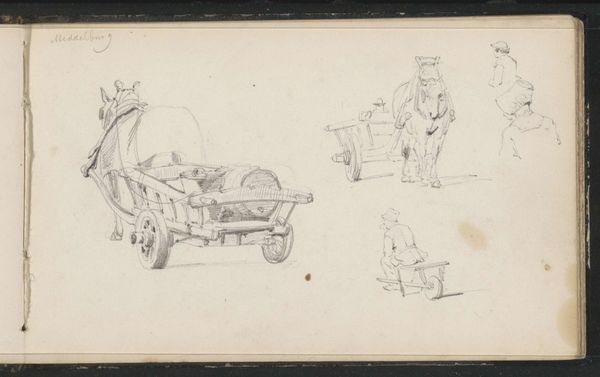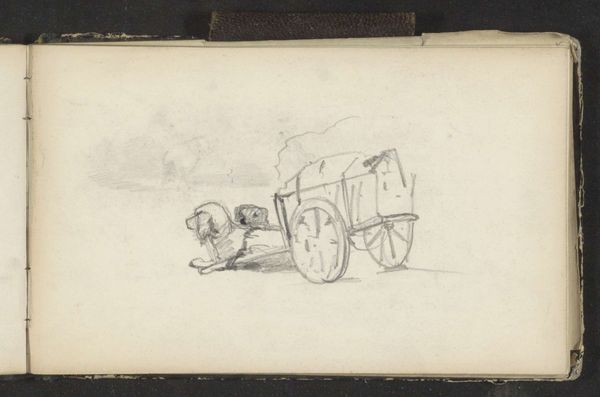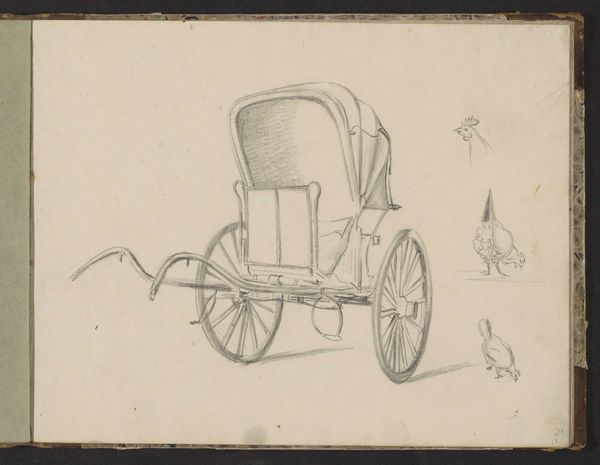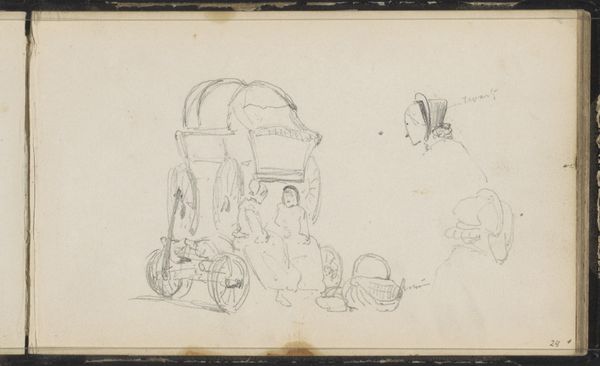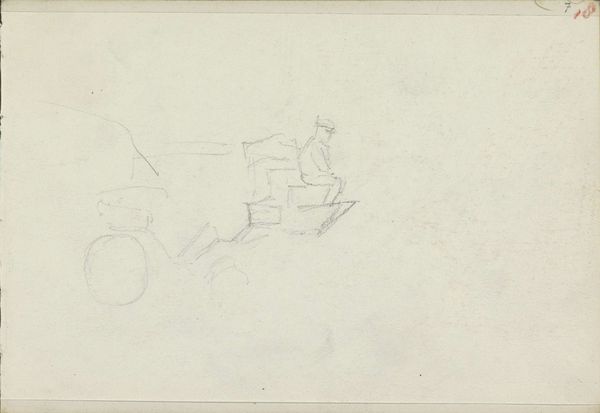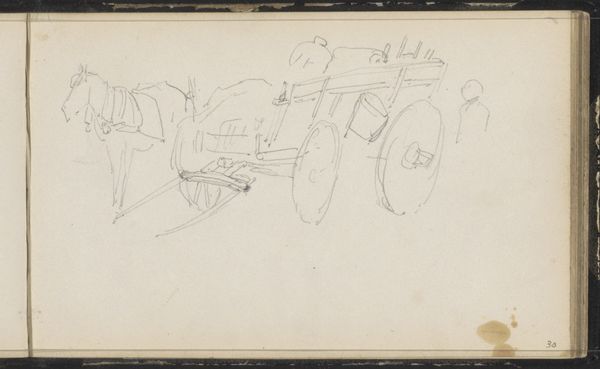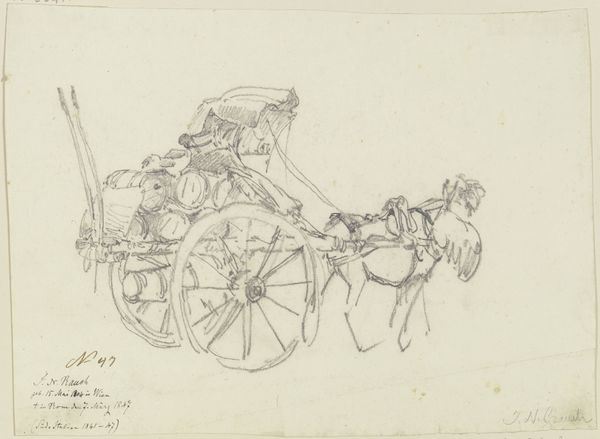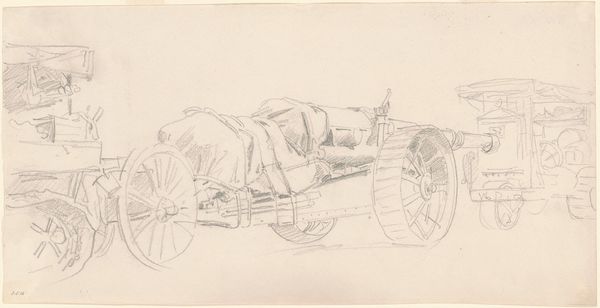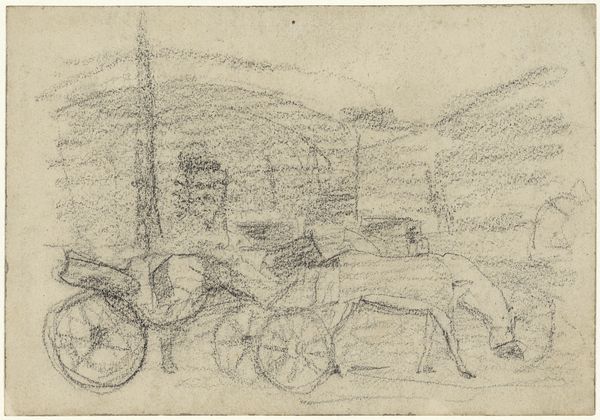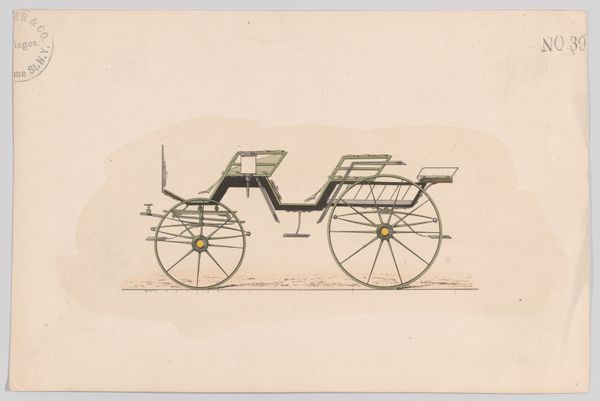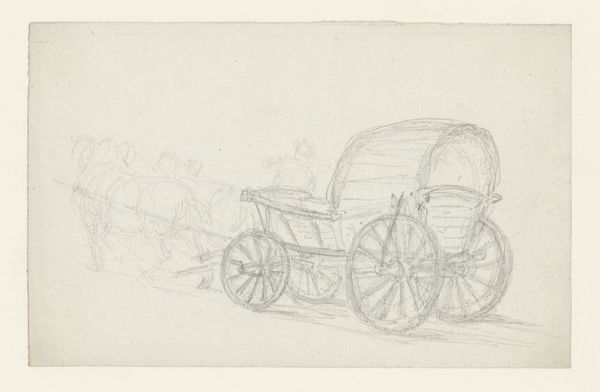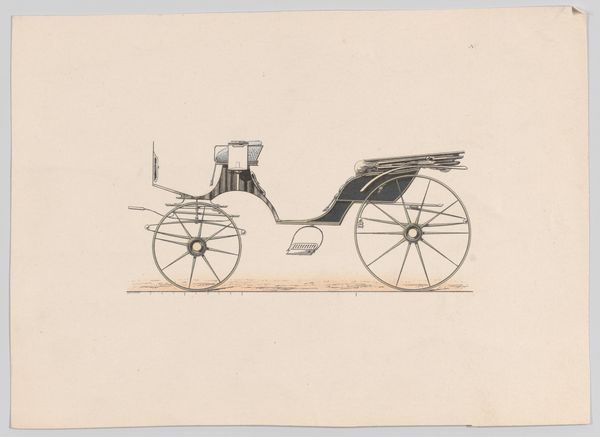
drawing, pencil
drawing
landscape
figuration
pencil
genre-painting
realism
Copyright: Rijks Museum: Open Domain
Curator: What strikes me immediately about this piece is its incredible stillness and quietude. Despite being just a pencil drawing, the artist, Cornelis Springer, manages to convey a real sense of time slowed down. Editor: And what are we looking at specifically? This is "Vrouw bij een kar," or "Woman by a cart," created sometime between 1860 and 1866. It’s currently held in the collection of the Rijksmuseum. Curator: Springer was a master of urban landscapes, but what's fascinating here is the focus on a working-class figure and the apparatus that supports her. The rough quality of the drawing emphasizes labor. It’s not polished; it feels like a study of the cart itself – its construction, wear, and perhaps, even the materials used. How the object and woman meet – creating one mass that represents something much larger than herself, but rather a class. Editor: Yes, seeing this artwork prompts many thoughts for me about gender, class, and visibility. This drawing, simple as it seems, subtly engages with the social realities of the 19th century. Look at the way Springer depicts the woman: she's not romanticized. Her posture seems burdened, perhaps suggesting the physical demands placed on working-class women. The art piece does very subtly call for these women who often carry the load. Curator: I agree. Springer is drawing our attention to something vital: the intersection between human labor and manufactured object. The pencil itself, as a readily available and inexpensive tool, is key to that concept. Consider the widespread industrial changes impacting lives during this time in the Netherlands. The very fact of the simplicity that creates this landscape really helps show the hard, tiring lifestyle the working-class community deals with. Editor: And I also think it invites reflection on the role of the viewer. As contemporary audiences, we have the privilege of observing this scene from a distance. The questions arise: what is our responsibility towards understanding, or even, acting upon these kinds of social imbalances that are visualized through works such as this one? This artwork helps bring those dialogues to light through this snapshot of a time that, quite honestly, is not that different from our own. Curator: Absolutely. And thinking about how those ideas relate to today makes one truly consider and remember this piece beyond just its appearance. Editor: Agreed. This drawing invites introspection—both on the era it depicts, and on our own values.
Comments
No comments
Be the first to comment and join the conversation on the ultimate creative platform.
